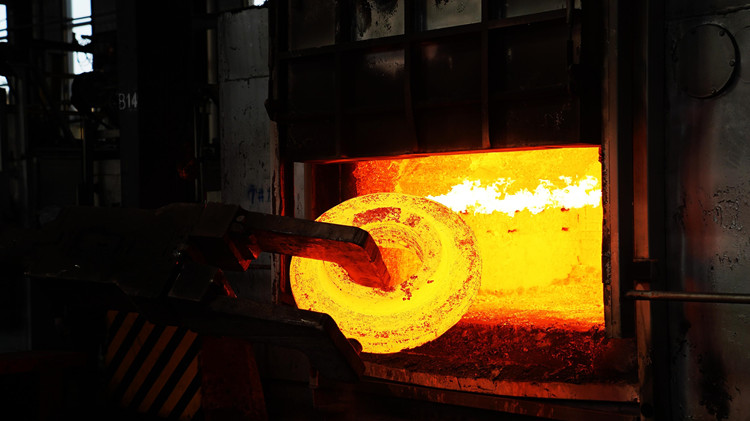- tyler@kirail.com
- +86 15603721115
After heat treatments such as annealing, normalizing, quenching, tempering and surface modification, forgings may produce heat treatment deformation.
The fundamental cause of deformation is the internal stress generated by the forging during heat treatment, that is, the internal stress remaining after the forging heat treatment due to the difference in internal and external temperature and the difference in organizational transformation.
When this stress exceeds the yield point of steel at a certain moment during the heat treatment process, it will cause the forging to twist.
The internal stress generated during the heat treatment process includes thermal stress and phase change stress.

1. Thermal stress
When the forging is heated and cooled, it is accompanied by thermal expansion and cold contraction. When the surface and the core of the forging are heated or cooled at different speeds and a temperature difference is generated, the expansion or contraction of its volume is also different from that of the surface and the core. The internal stress generated by the different volume changes caused by the temperature difference is called thermal stress.
During the heat treatment process, the thermal stress of the forging is mainly manifested as follows: when the forging is heated, the surface temperature rises faster than the core, the surface temperature is high and expansion occurs, and the core temperature is low and does not expand. At this time, compressive stress is generated on the surface and tensile stress is generated in the core.
After heat penetration, the core temperature rises and the forging expands. At this time, the forging shows volume expansion.
When the workpiece is cooled, the surface cools faster than the core, the surface shrinks, the core temperature is higher, which prevents shrinkage, tensile stress is generated on the surface, and compressive stress is generated in the core. When cooled to a certain temperature, the surface has been chilled and no longer shrinks, while the core shrinks due to continued cooling, compressive stress is generated on the surface, and tensile stress is generated in the core. This stress still exists inside the forging at the end of cooling, which is called residual stress.
2. Phase change stress
During the heat treatment process, due to the different mass and volume of forgings with different organizational structures, the mass and volume of forgings will inevitably change.
Due to the temperature difference between the surface and the core of the forging, the transformation of the surface and core organizations is not timely, resulting in inconsistent changes in internal and external mass and volume, thereby generating internal stress.
This internal stress caused by the difference in organizational transformation is called phase transformation stress.
The mass volume of the basic organization in steel increases in the order of austenite, pearlite, troostite, troostite, sub-bainite, tempered martensite, and martensite.
For example, when the forging is rapidly cooled after quenching, the surface layer changes from austenite to martensite and expands in volume, but the core is still in the austenite state, which prevents the expansion of the surface layer. As a result, the core of the forging is subjected to tensile stress, while the surface layer is subjected to compressive stress.
When cooling continues, the surface temperature drops and no longer expands, but the volume of the core continues to expand and transforms into martensite, which is hindered by the surface, so the core is subjected to compressive stress and the surface is subjected to tensile stress.
After the forging is cooled, the stress will still remain inside the forging and become residual stress.
Therefore, during the quenching cooling process, the thermal stress and phase transformation stress are opposite, and the two stresses remaining in the forging are also opposite.
The combined stress of thermal stress and phase transformation stress is called quenching internal stress.
When the residual internal stress in the forging exceeds the yield point of the steel, the workpiece will undergo plastic deformation, causing the forging to twist.